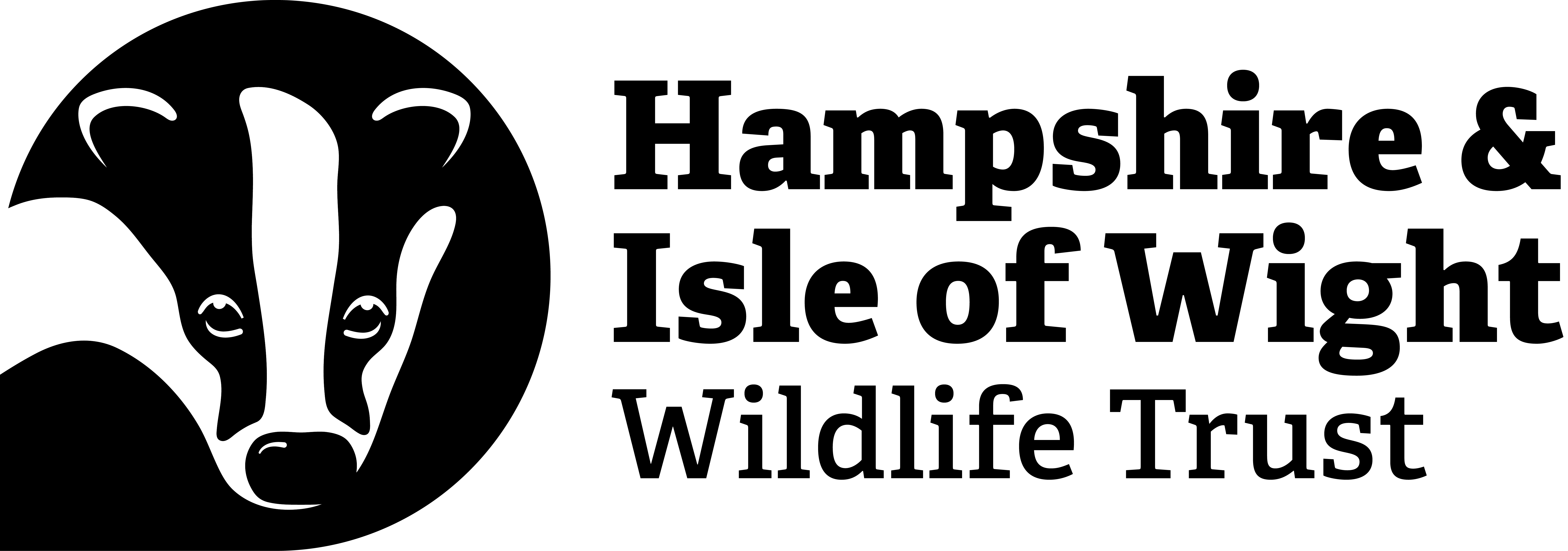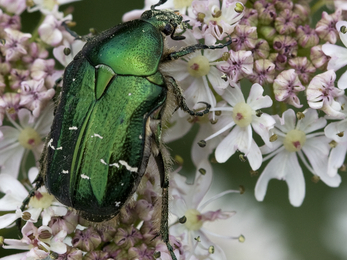From May through October, rose chafers are often spotted on warm, sunny days, feeding on flowers - particularly dog roses. While their nibbling may worry some gardeners, rose chafers are more friend than foe. Their larvae develop deep in compost heaps, leaf mould, or decaying wood, feeding on rotting vegetation and helping to recycle nutrients back into the soil. They are often found in composting piles. As adults, their hairy bodies pick up pollen, allowing them to play a small but helpful role in pollination, making rose chafers a surprisingly valuable part of a healthy garden ecosystem.
Measuring around 20mm in length, these large beetles are not to be confused with the noble chafer. These striking beetles can be distinguished from the noble by the small, V-shaped scutellum (a triangular plate between the wings) visible on their backs. Although widespread in the UK, they are most common in the south.

